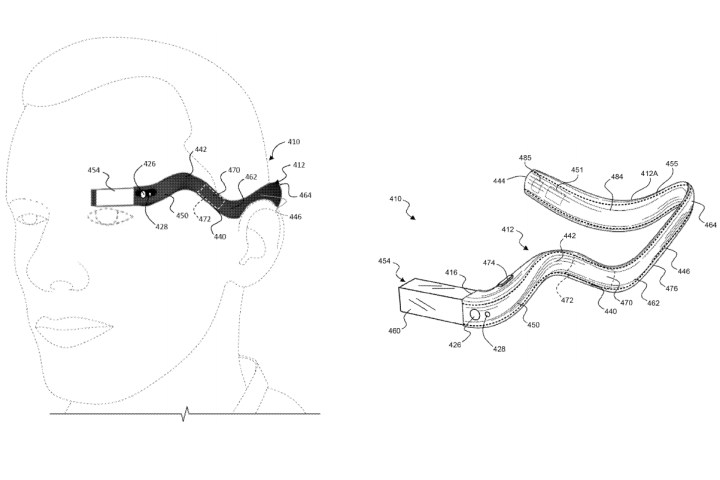
The patent, titled “Wearable device with input and output structures,” was filed on September 28, 2012, and granted on November 24. It’s worth noting that this means Google filed the patent shortly after the first version of Project Glass was announced to the world in April 2012 and before the Explorer edition was sent to developers in April 2013.
Google’s full description of the monocle device is 324-word run-on sentence, but it’s basically a flexible band that the user can shape any way he or she wants to fit around the back of their head, over their ear, and around their temple. An image filed with the patent explains it best:
The patent also notes that the band would have “touch-based input circuitry,” which means the wearer could presumably tap the band to change the information displayed on the monocle over their eye.
Google did not respond to inquiries from CNET or The Verge.
This is hardly the only word about Google Glass since Google ended the Explorer program in January. For instance, in July, rumors emerged about a Google for Work enterprise program that would give employees free Glass units. Earlier this month, insiders were cited as saying Google was working on two versions of a wearable device that did not have screens and relied on audio.
Editors' Recommendations
- Calls for Google Fi users on Android are now end-to-end encrypted
- The latest version of Google Chrome is now up to 23% faster
- Zoom video chat rival Google Meet releases free version
- Update Google Chrome to latest version immediately to avoid trio of threats
- Google’s future baby monitor could spy on your kid to alert you before they cry


